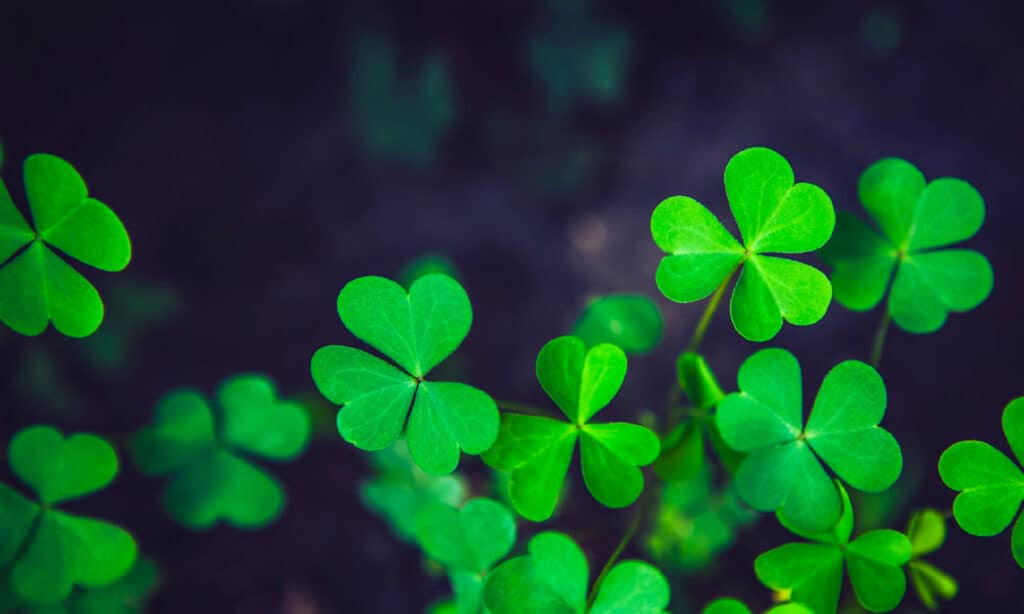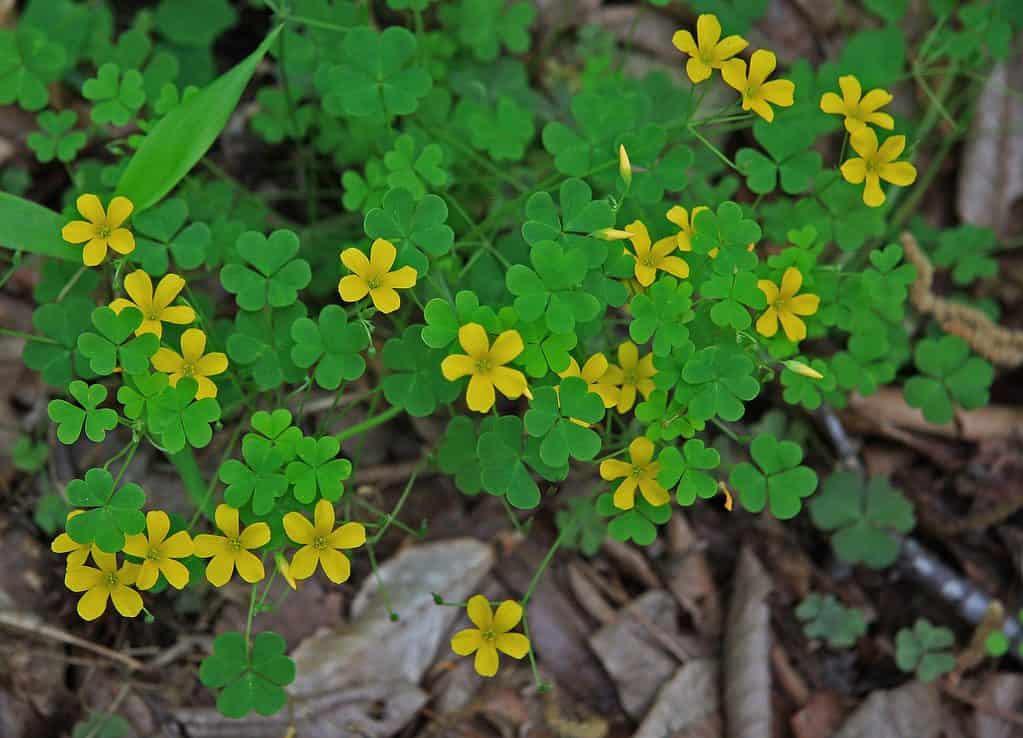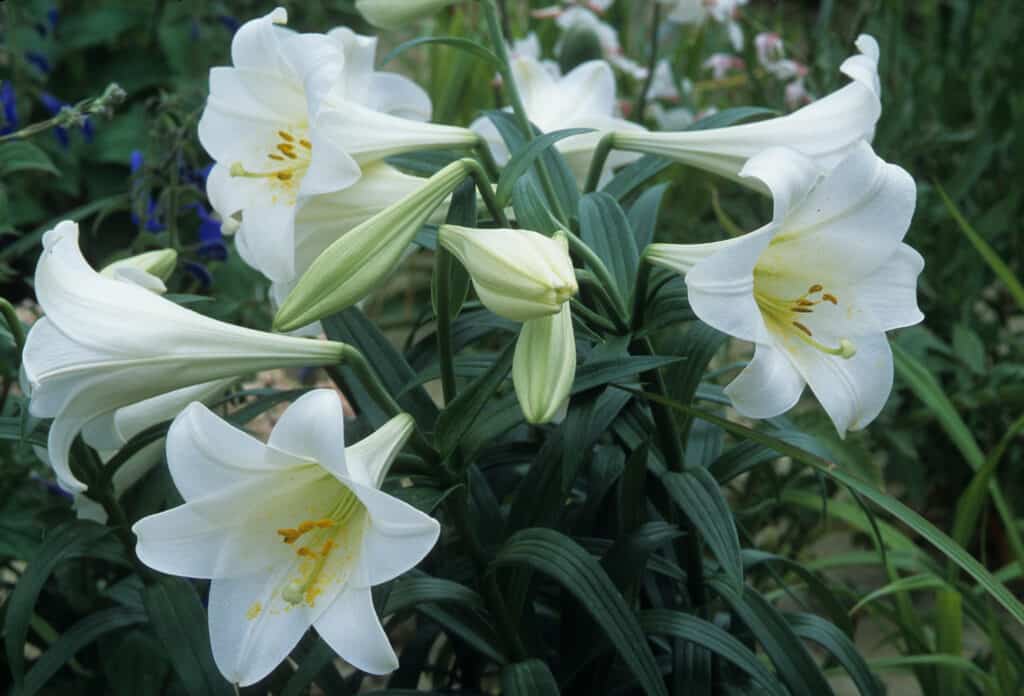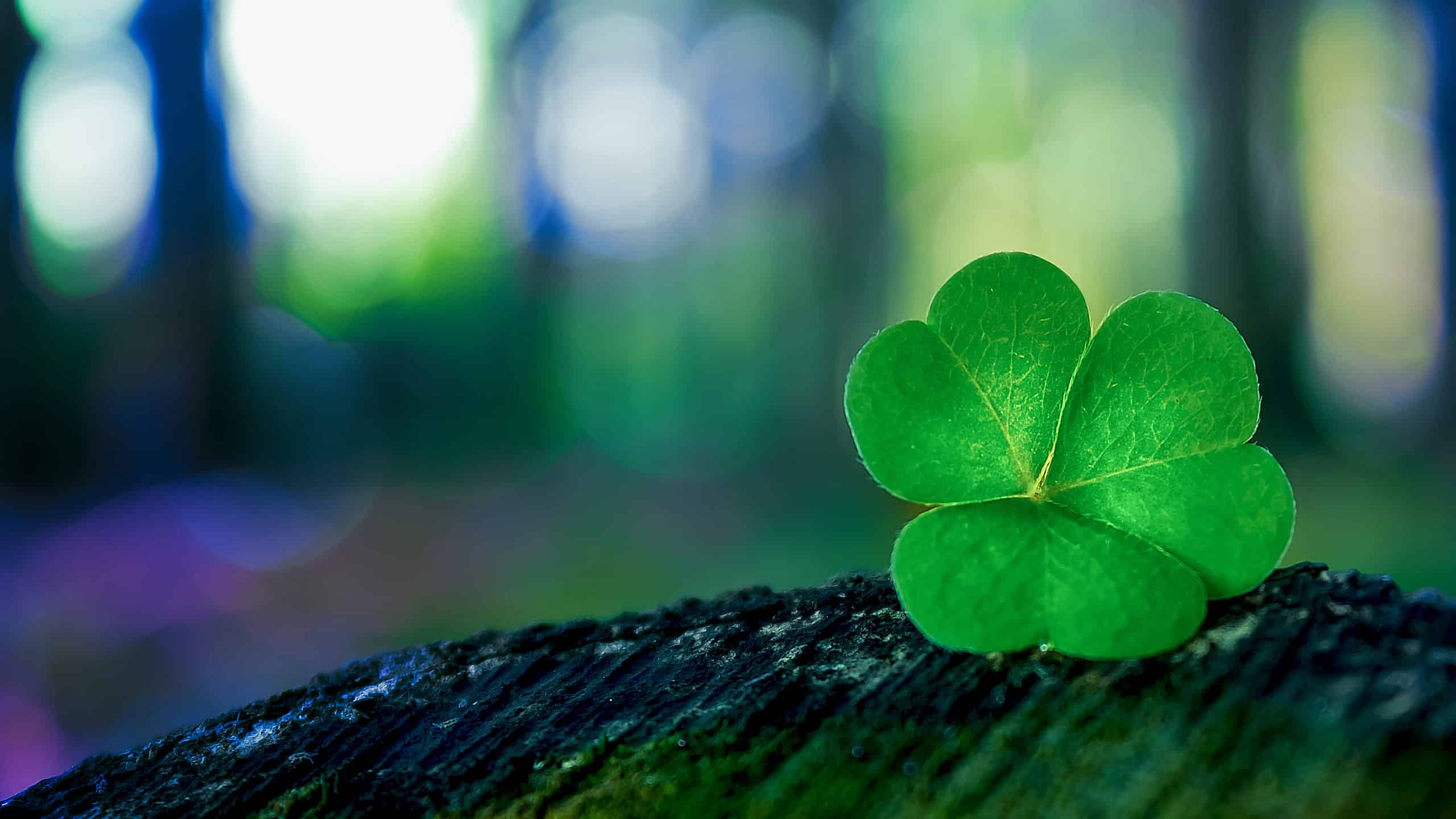Ireland is a beautiful country known as the “Emerald Isle.” It can be easy to see why it has been given this moniker for anybody that has visited (or even those who have only seen photos). The island is filled with gorgeous lush hills and dramatic clifftops that give you a stunning view of the Atlantic Ocean. In addition to its beauty, Ireland also has a long history of Celtic traditions.
With that being said, are you curious to find out more about this fascinating island? Let’s take a look at one of the symbols of Ireland, its national flower: the shamrock. Let’s learn all about the national flower of Ireland and all of the folklore associated with it.
Geography and Climate of Ireland
The island of Ireland is actually made up of two distinct political areas: Ireland and Northern Ireland. The island is well-known for having a temperate maritime climate. This means that the climate is distinguished by its placement in the North Atlantic. Overall, Ireland typically has mild winters and cool summers because of the humid air and the winds that blow through. However, one of the most distinguishing characteristics of the country is that it is always a lush green color. It’s like this no matter what time of year it is. This is why it has been given the moniker “Emerald Isle.” This climate makes it a perfect home for Ireland’s national plant, the shamrock.
The Shamrock: National Flower of Ireland
As mentioned above, the national flower of Ireland is the shamrock (Trifolium dubium or Trifolium repens). However, it is important to note that technically it is classified as a plant and not a flower. Today, the shamrock, also known as the “three-leaf clover,” is a popular symbol. It is one that is immediately associated with Ireland and its folklore. So what exactly do we know about the shamrock and how did it become the national plant of Ireland? Let’s find out all of that and more below.

The shamrock, the national flower of Ireland, is technically categorized as a plant, not a flower.
©iStock.com/gadost
What Are Shamrocks?
Shamrock comes from the Gaelic word seamrog, which means “little clover.” To this day, however, botanists still have not fully agreed on which clover species is actually the original shamrock. However, one botanist, Charles Nelson, did attempt to narrow down which type of clover is most associated with the name shamrock during a survey in 1988. Overall, the results showed that there is not one “true” species of shamrock. Instead, the survey did shine a light on which species is considered a true shamrock by most of the Irish population. Nearly half of all Irish people surveyed answered that Trifolium dubium (lesser clover) is the “original” shamrock.
So what does a shamrock look like? Typically you’ll recognize the plant because of its green color. If we’re considering the Trifolium dubium as the original shamrock, then you’ll notice that it has three leaflets and also grows small yellow flowers. Their genus name, Trifolium, actually translates to “having three leaves.” It’s interesting to note that there are several different plants that have three leaflets that are called shamrocks but are not actually shamrocks. However, there is so much more to this plant than just the scientific classifications of it. There is a lot of folklore, legend, and traditions behind this famous plant.
Common Names and Legends
The shamrock is a symbol of Ireland and is especially known as a symbol of luck in the United States, thanks to Saint Patrick’s Day. So how did the shamrock become the emblem of Ireland with such a far-reaching influence that coincides with luck?
In the early days of Ireland, before Christianity made its way throughout the country, the Druids (Celtic priests) were the main religious leaders. The Druids believed that the shamrock had magic abilities that would thwart evil spirits — that’s why they would carry the shamrock around. A three-leaf shamrock was capable of showing them the presence of evil spirits and allowing them to escape in time. However, a four-leaf clover was especially lucky as it could get rid of bad luck imposed on the individual and also offer magical protection. That is why the “four-leafed clover” is considered a symbol of good luck.
However, as Christianity spread, the meaning behind the shamrock changed. The shamrock was then eventually used to represent the Holy Trinity by Saint Patrick. As Saint Patrick is the patron saint of Ireland, the shamrock has since been considered the symbol of Ireland since the 18th century.

Shamrocks were considered lucky by the Druids and were kept on hand to ward off evil spirits.
How to Grow Shamrocks
As such a well-known plant, the shamrock can be found in flower shops and gardens throughout the United States. They are increasingly popular as they are a plant that will live a long life, especially if you take care of them properly. Oxalis acetosella, also known as wood sorrel and shamrock, is the most popular type of shamrock to be grown indoors. This is because this shamrock in particular has very big clover-shaped green leaves. This makes it a nice aesthetic plant to own. While there are many varieties to be found in flower shops, the most common ones will grow tiny, fragrant, white flowers.
When shamrocks are in their growing cycle, it is important to fertilize them every two to three weeks with a basic houseplant fertilizer. They prefer bright, indirect light in areas with warm daytime temperatures between 70 to 75 degrees Fahrenheit and cool night temperatures roughly ten degrees cooler. Some Oxalis plants will go dormant after about three months of blooming. This usually lasts anywhere from one to three months. During this time, the plant should be kept in a dark cool place and kept relatively dry until new growth appears.
Other Native Plants and Flowers of Ireland
Ireland is known for its lush green landscape. Even though the climate can be a bit chilly, the overall maritime climate results in a lush landscape filled with beauty. As a result, there are lots of native plants and flowers that grow in the country. There are approximately 2,000 vascular plant species in the country, such as ferns, flowering plants, and conifers. There are also over 800 bryophytes, which include mosses and hornworts. The mosses especially flourish in the country thanks to the damp climate. Some of the native flowers and plants include bog-rosemary, easter lilies, gorse, cowslips, blackthorn red clover, and primrose.

Easter lilies are a symbol of peace in Ireland.
©COULANGES/Shutterstock.com
Thank you for reading! Have some feedback for us? Contact the AZ Animals editorial team.








